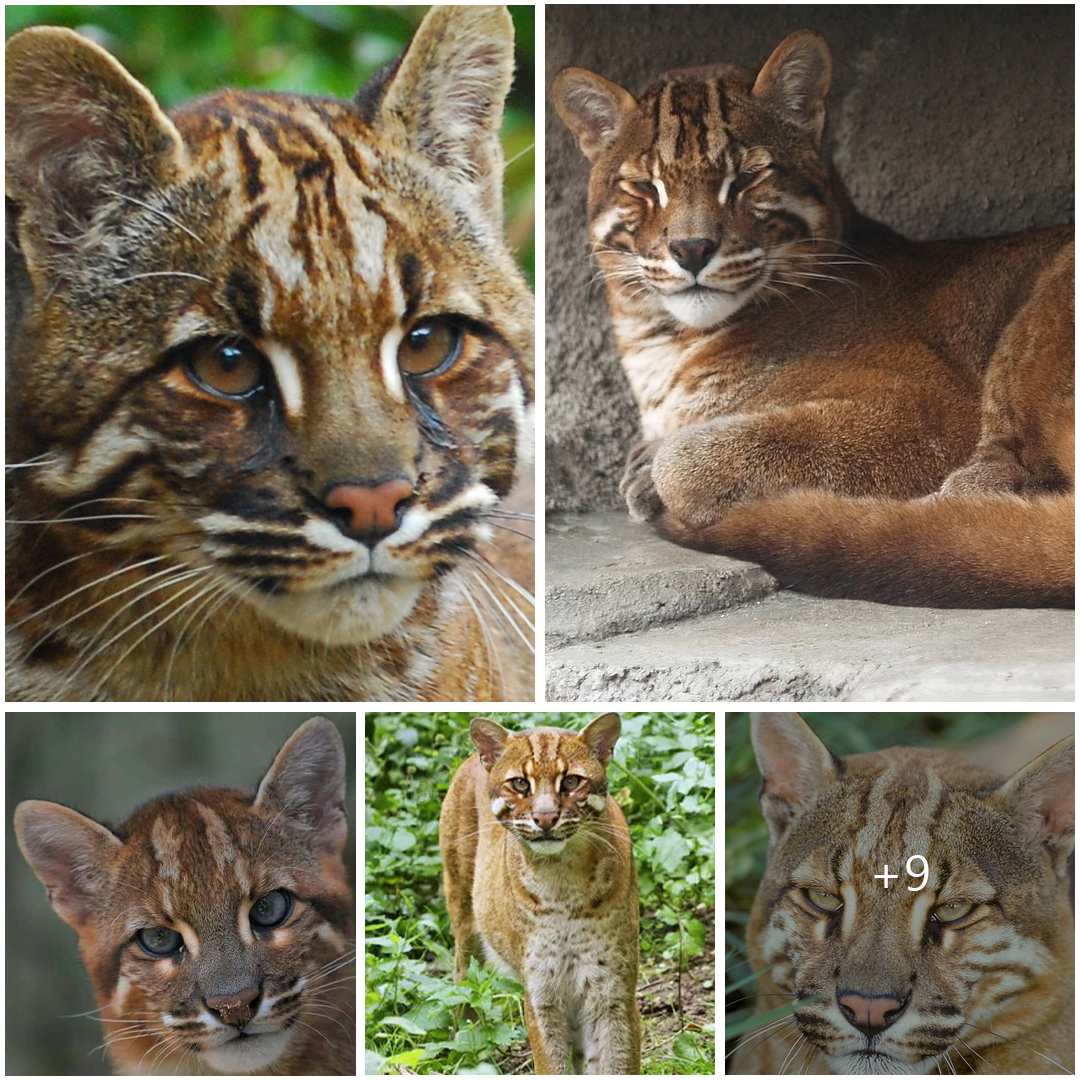
Exploring the Enigmatic Asian Golden Cat (Catopuma temminckii)
The Asian Golden Cat (Catopuma temminckii) stands as a mysterious and elusive predator in the dense forests of Southeast Asia. With its golden fur, secretive nature, and stealthy movements, this feline species captivates the imagination of wildlife enthusiasts and researchers alike. In this article, we delve into the characteristics, habitat, behavior, and conservation status of the Asian Golden Cat.
Appearance: The Asian Golden Cat is characterized by its medium-sized build and distinctive coat coloration, which varies from reddish-brown to golden-yellow. Its fur may exhibit faint spots or stripes, providing effective camouflage in its forest habitat. The cat’s rounded ears, short muzzle, and muscular body reflect its adaptation for hunting in dense vegetation. While its appearance shares similarities with other wild cat species, such as the leopard cat and jungle cat, the Asian Golden Cat possesses unique features that distinguish it as a separate species.

Habitat: The Asian Golden Cat inhabits a variety of forested habitats, including tropical and subtropical rainforests, deciduous forests, and montane forests. It prefers areas with dense vegetation, rugged terrain, and abundant prey populations, such as small mammals, birds, and reptiles. The cat’s range extends across Southeast Asia, including countries like Nepal, India, Bhutan, Myanmar, Thailand, Cambodia, Laos, Vietnam, and parts of China.
Behavior: As a solitary and crepuscular hunter, the Asian Golden Cat is most active during dawn and dusk, utilizing its keen senses of sight and hearing to locate prey. It is a skilled climber and jumper, capable of navigating through the forest canopy in pursuit of arboreal prey. Despite its elusive nature, the cat occasionally ventures into human settlements in search of food, leading to occasional conflicts with local communities.
Conservation Status: The Asian Golden Cat faces numerous threats to its survival, including habitat loss, fragmentation, and poaching. Deforestation, logging, agricultural expansion, and human encroachment have resulted in the degradation and fragmentation of its forest habitat. Additionally, the cat is hunted for its fur and body parts, which are used in traditional medicine and cultural practices in some regions. Conservation efforts focused on habitat protection, law enforcement, and community engagement are essential for safeguarding the future of this elusive feline species.
In conclusion, the Asian Golden Cat remains a symbol of mystery and intrigue in the forests of Southeast Asia. As a secretive and elusive predator, it plays a vital role in maintaining the ecological balance of its habitat. By raising awareness about the importance of conservation and implementing effective measures to protect its forest home, we can ensure that future generations will continue to marvel at the beauty and resilience of the Asian Golden Cat.





